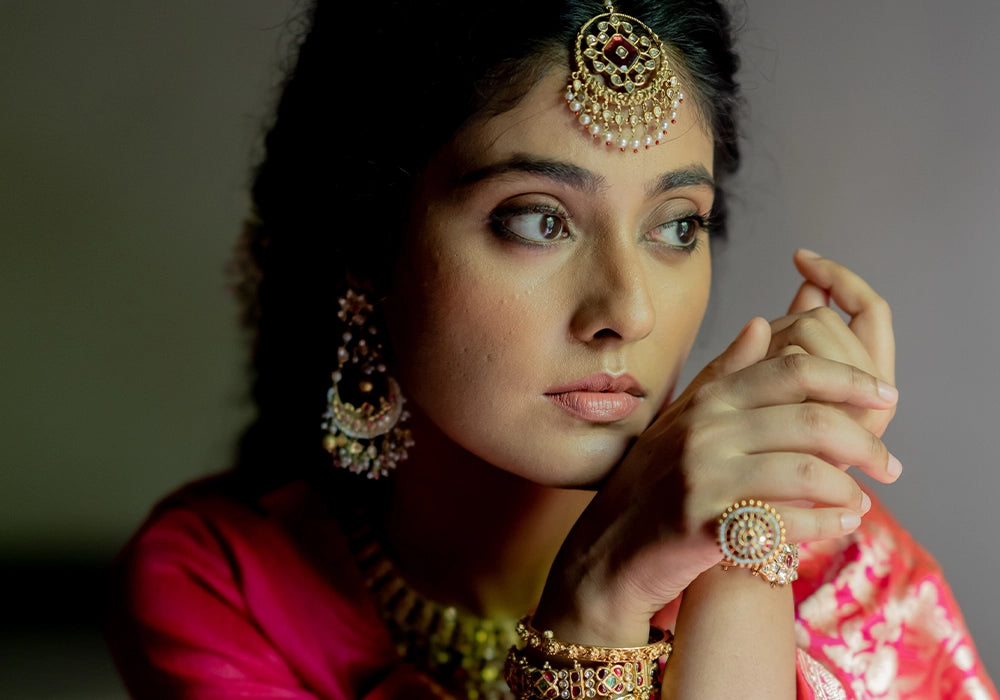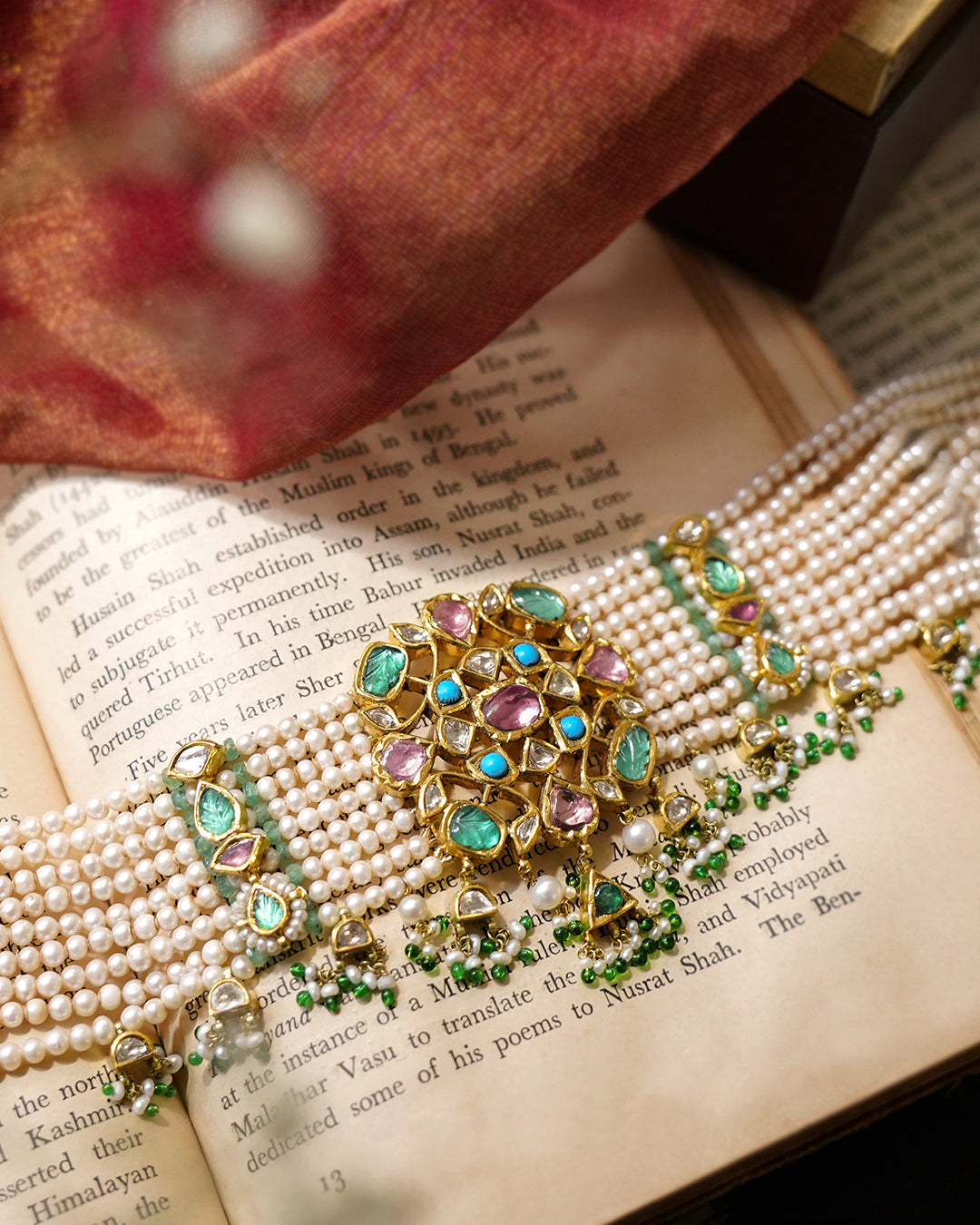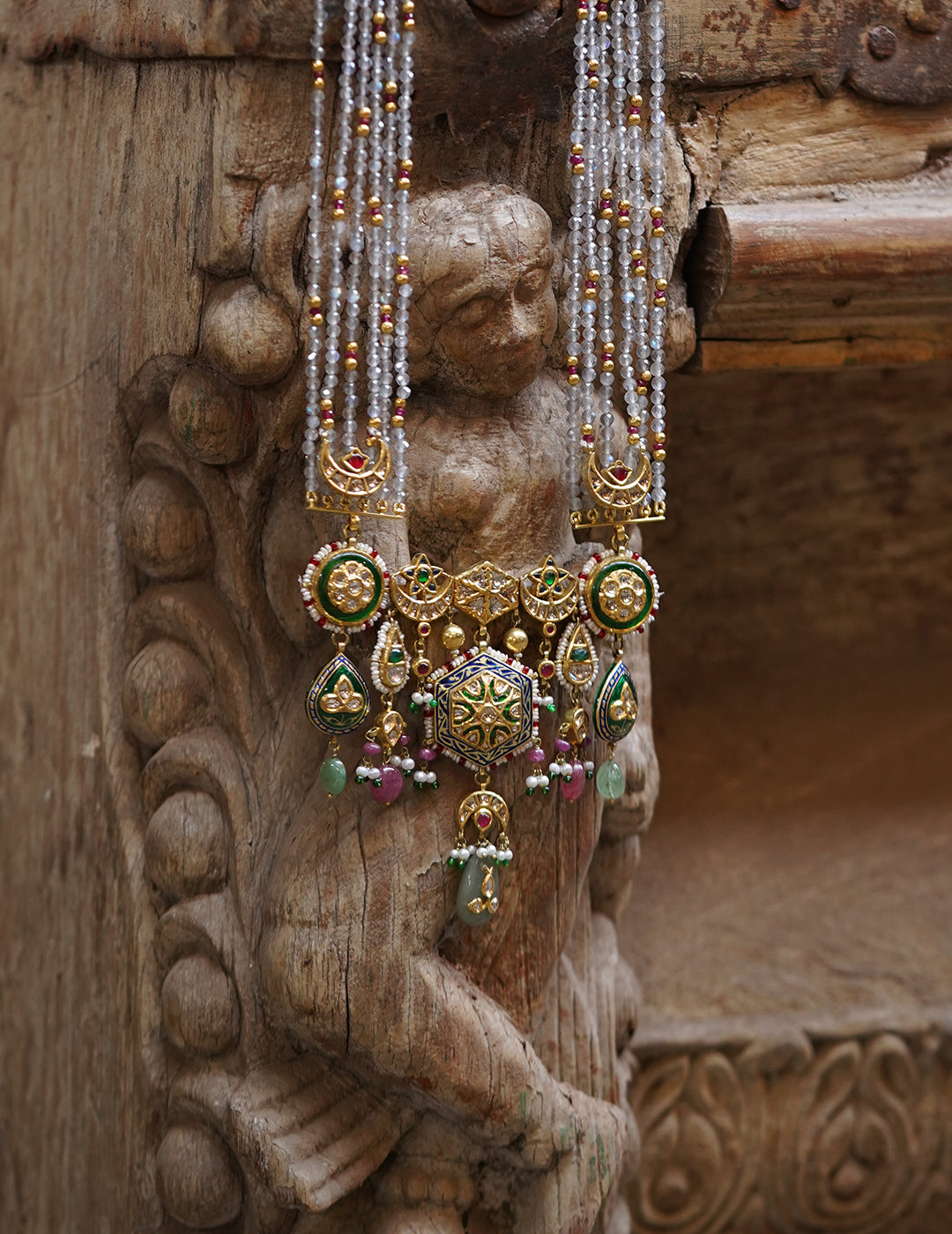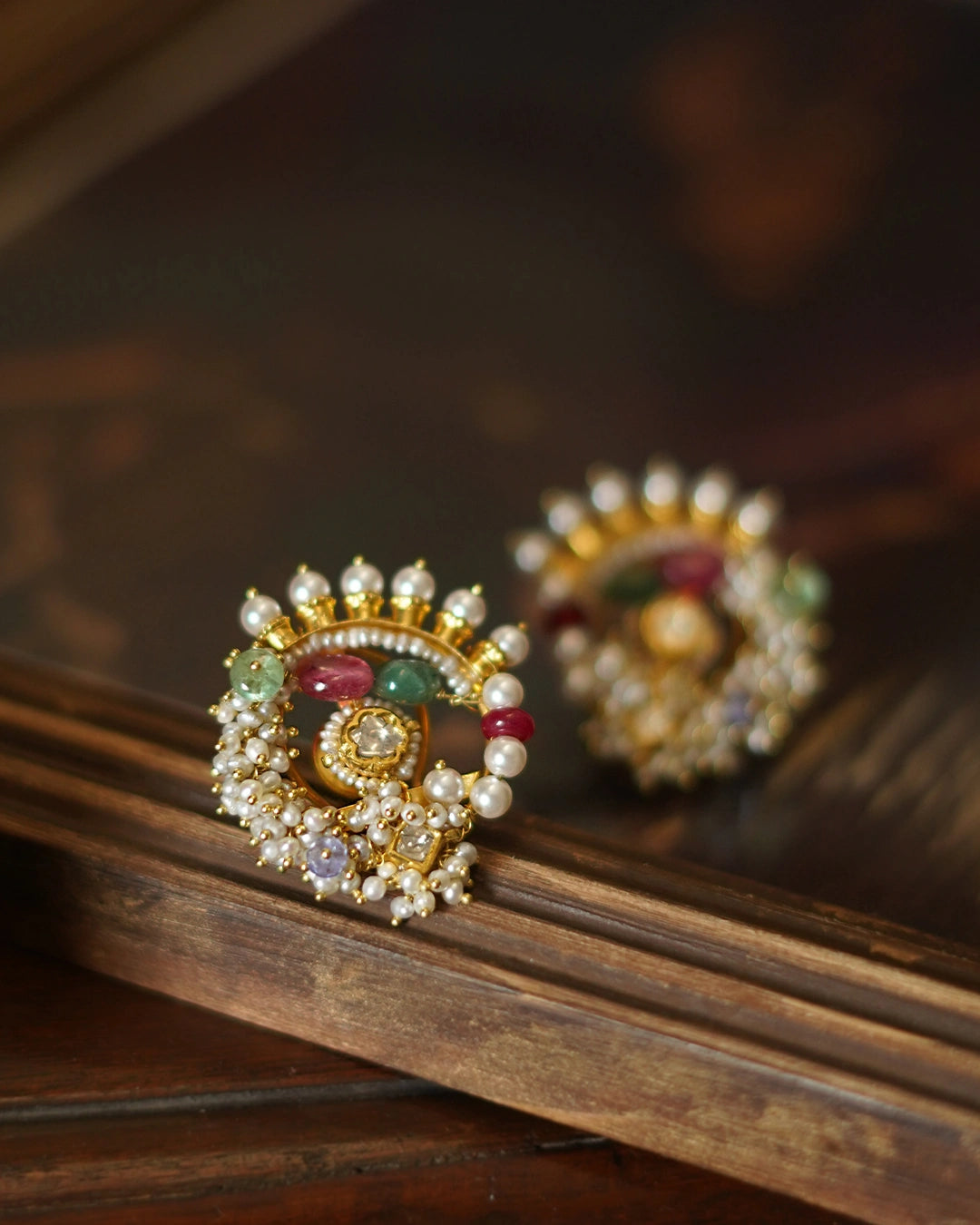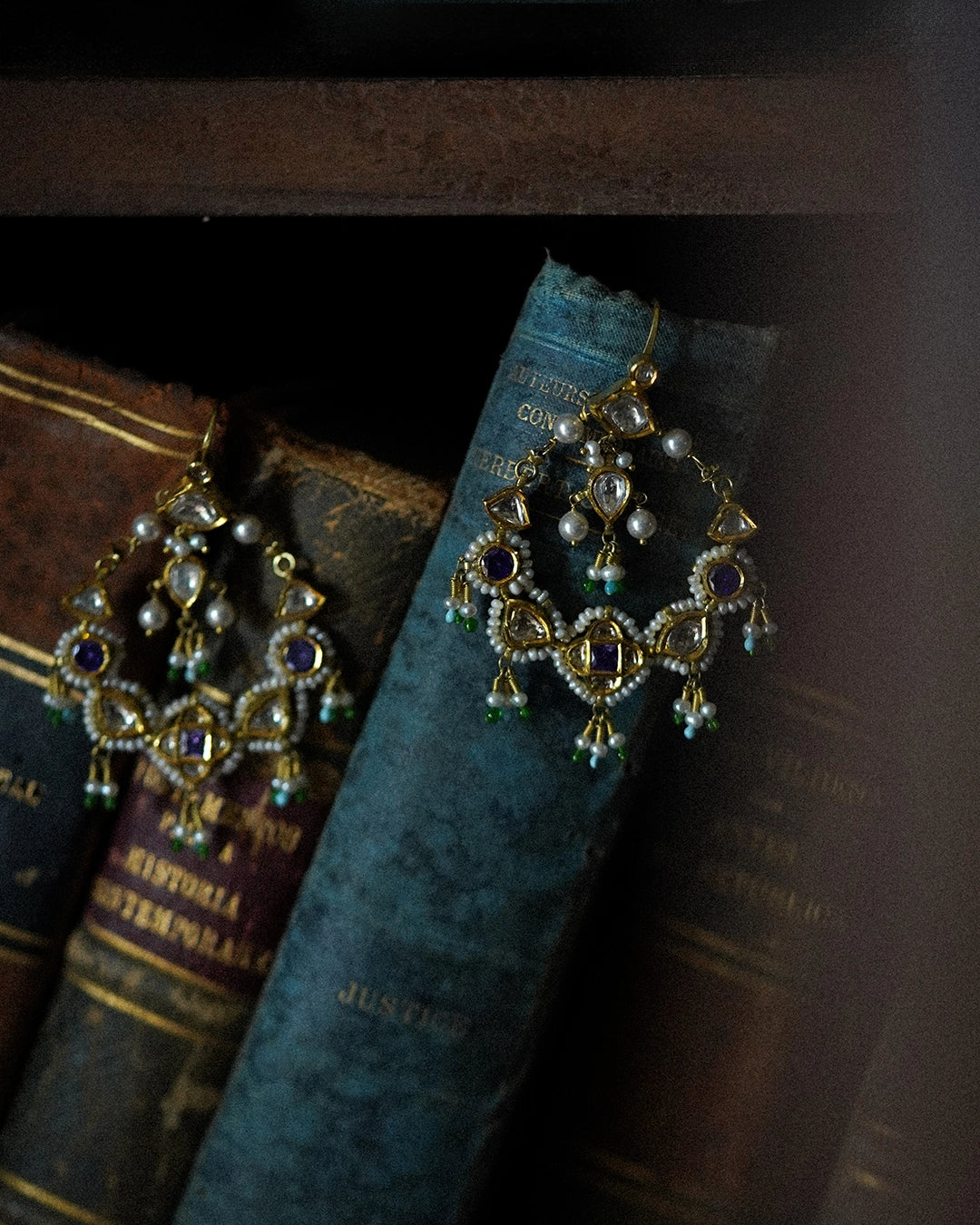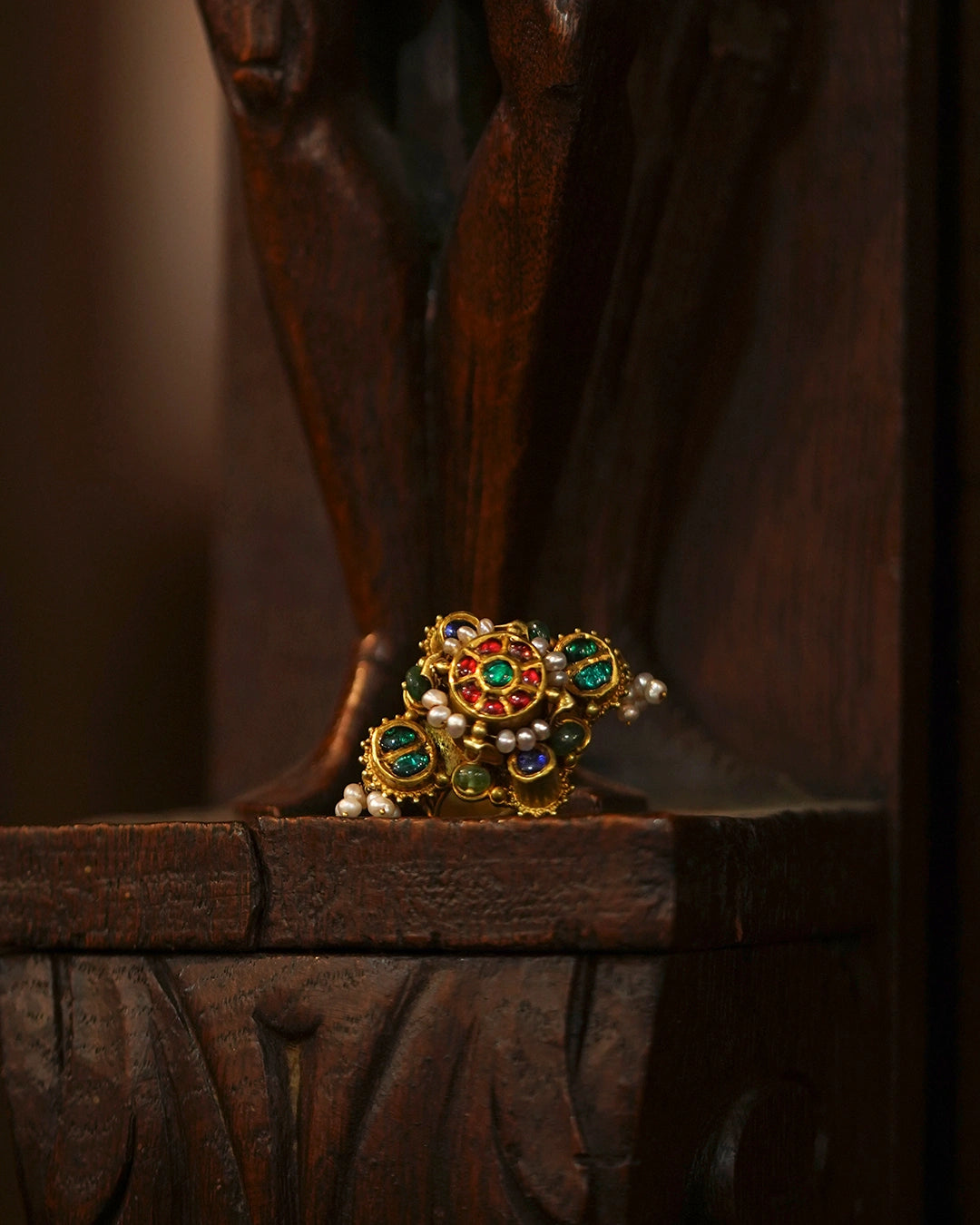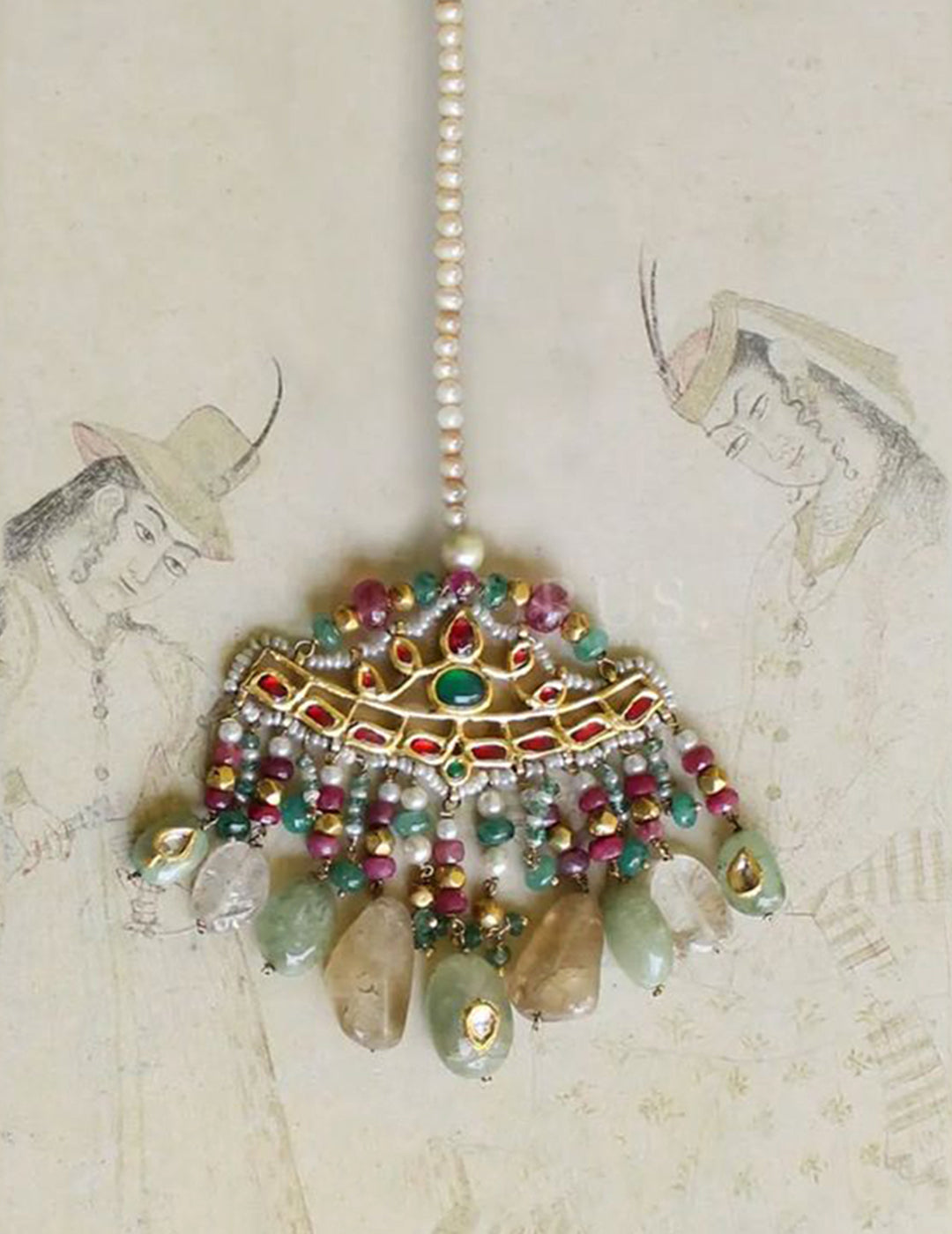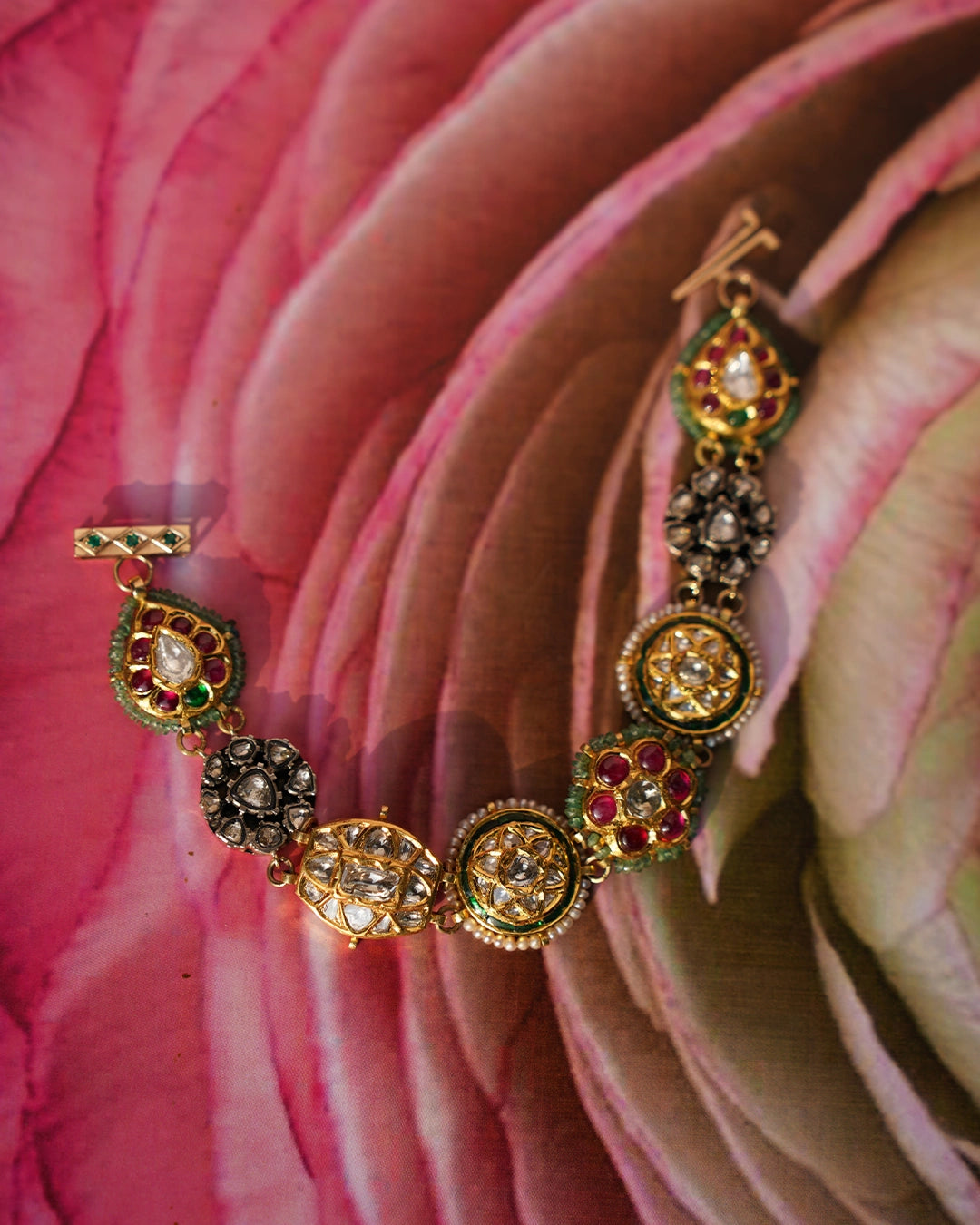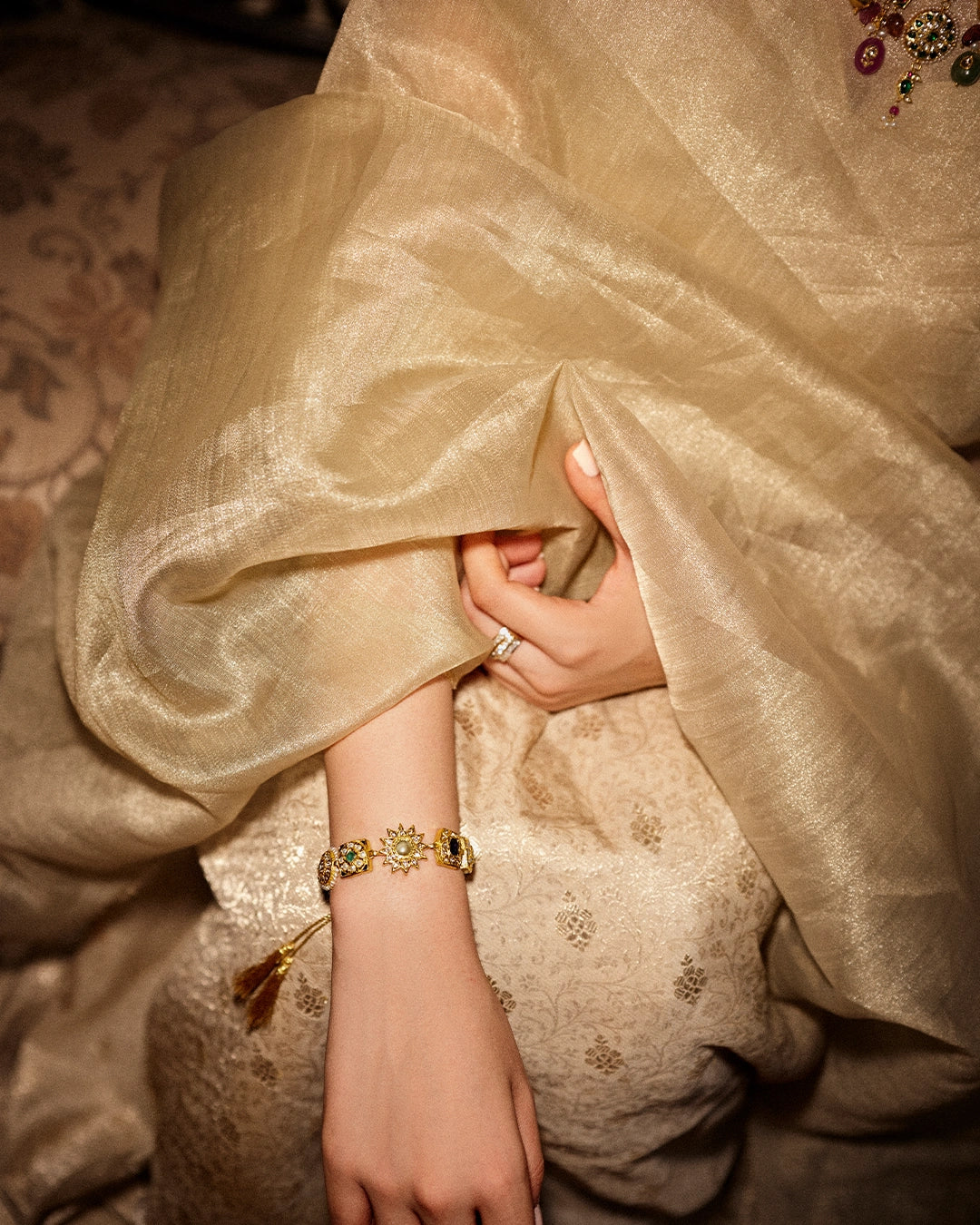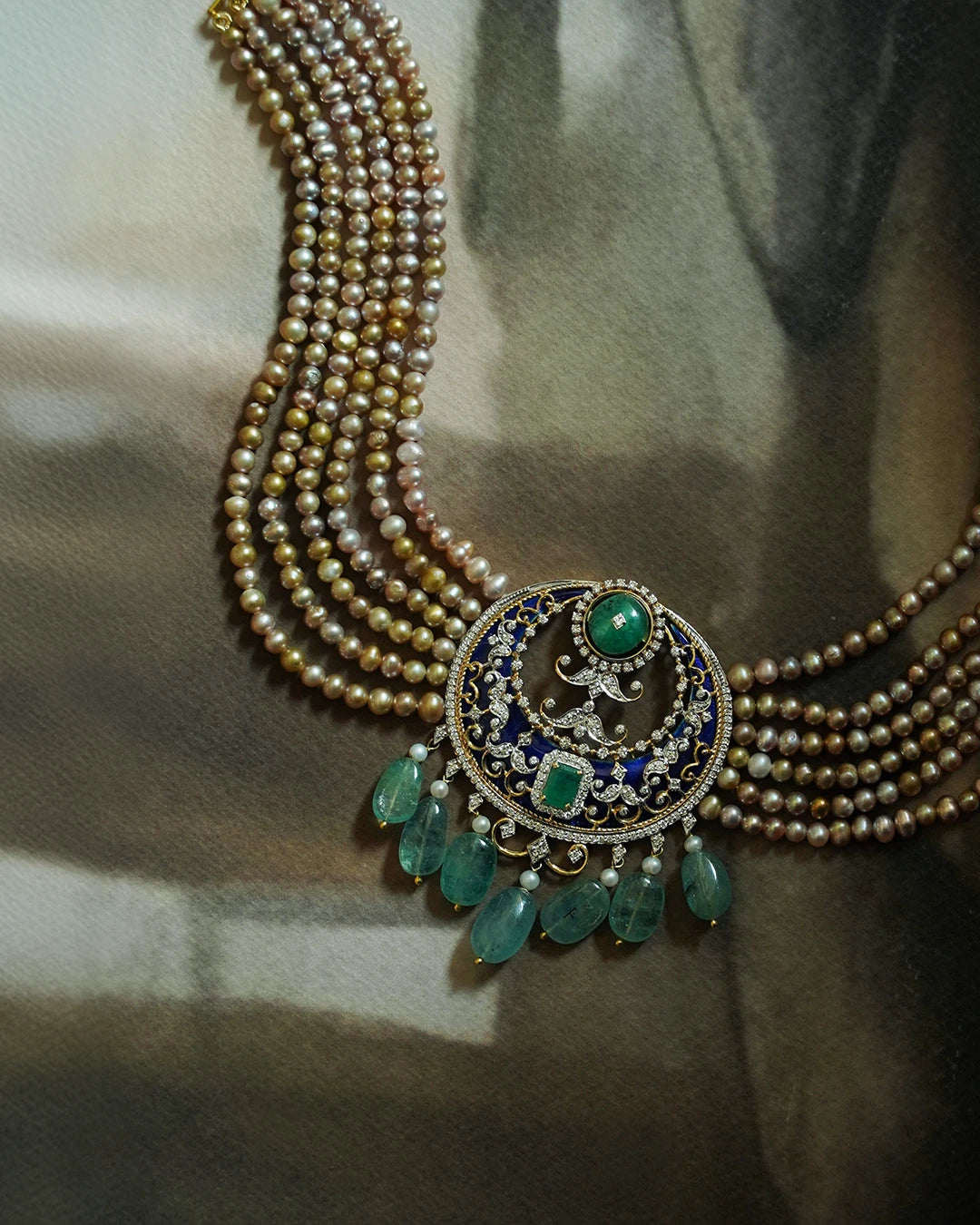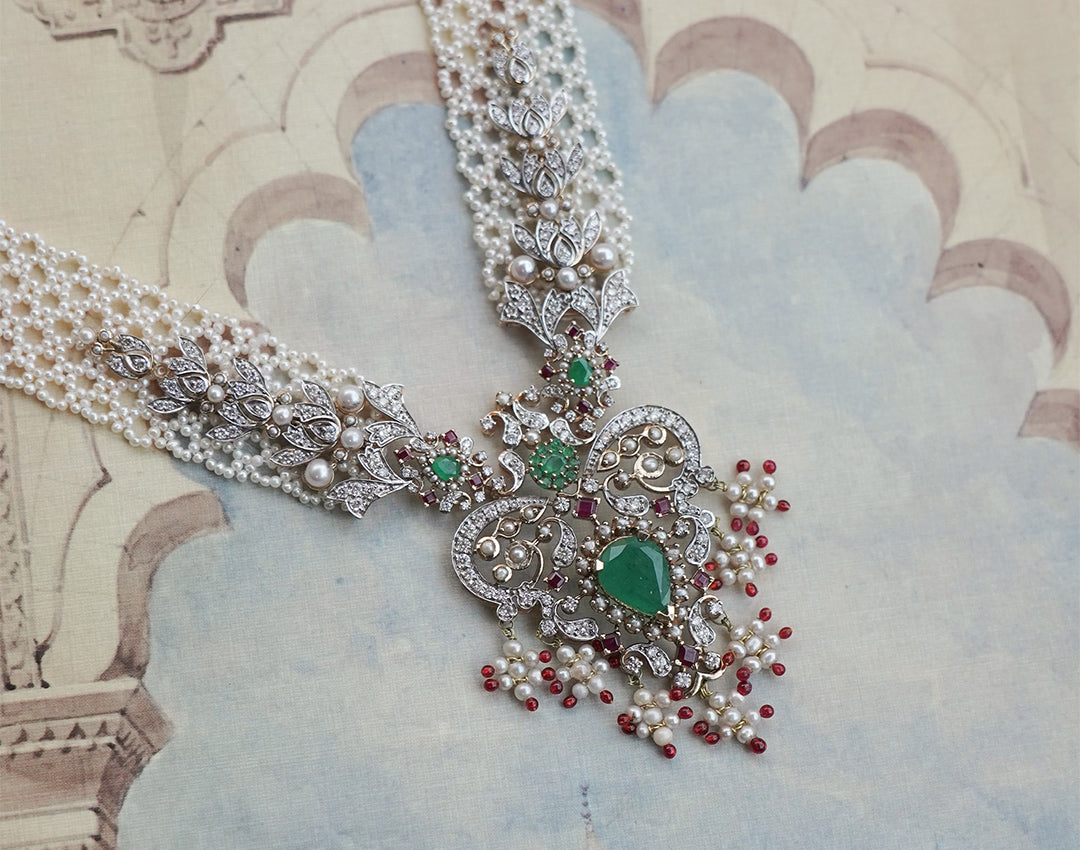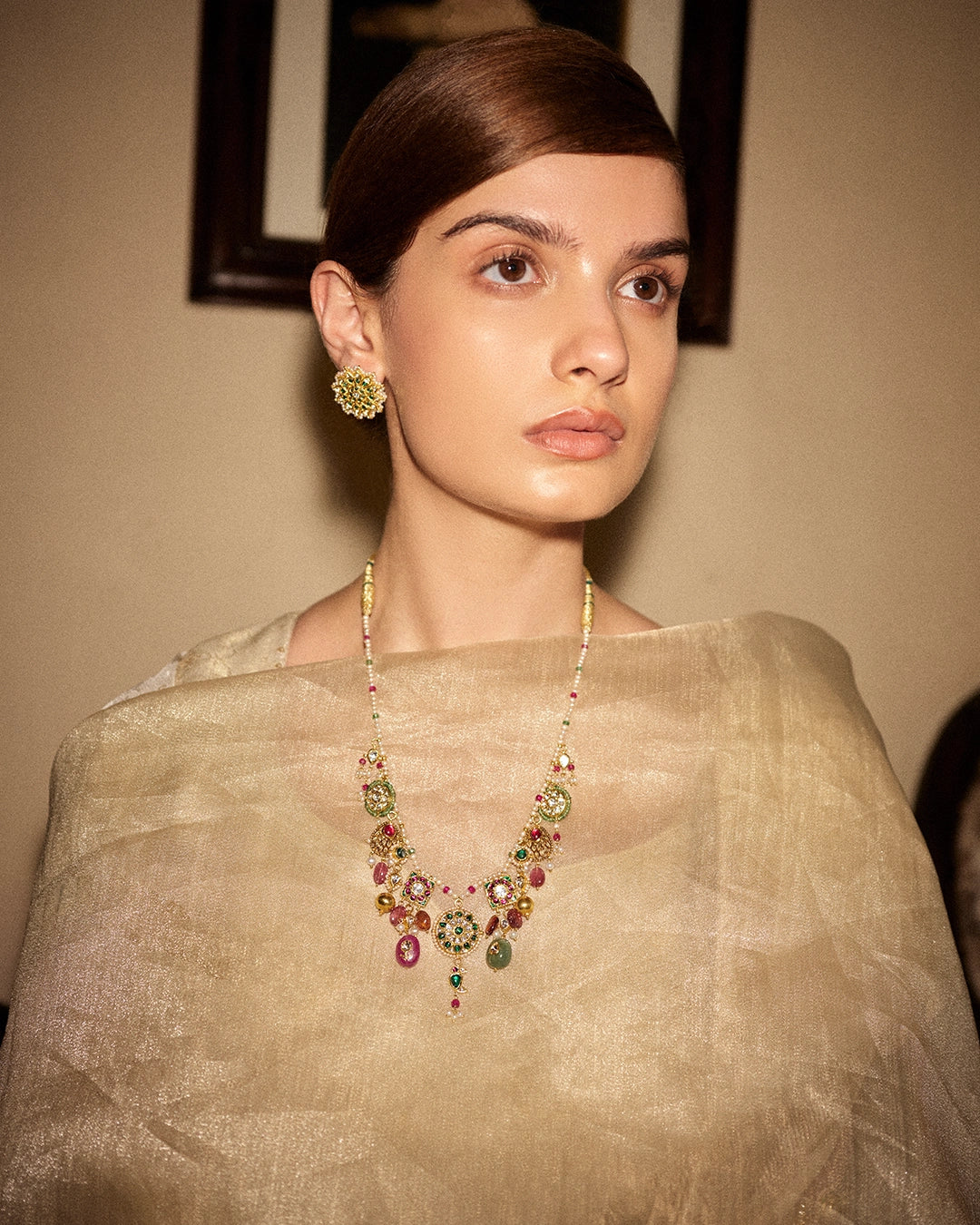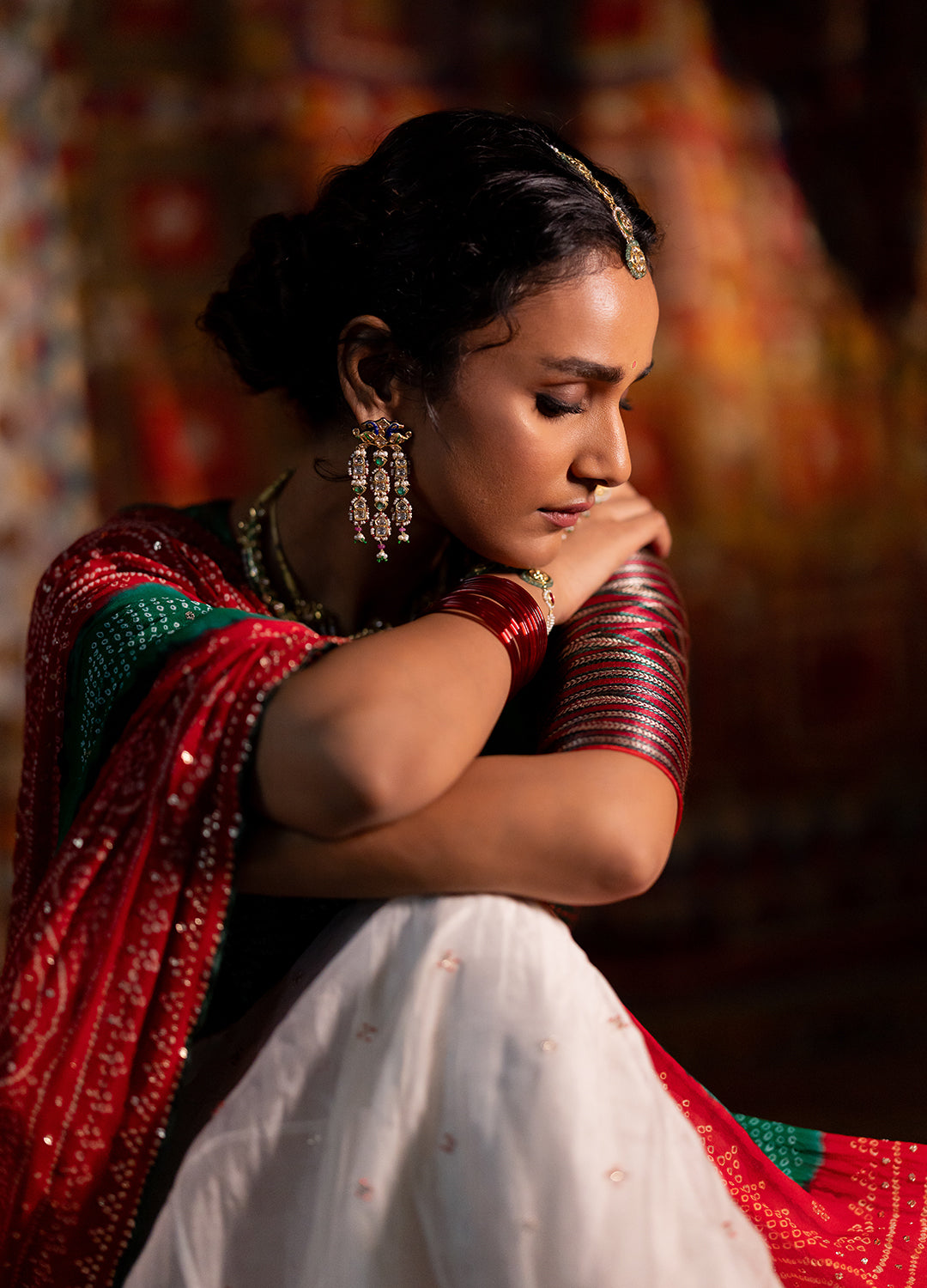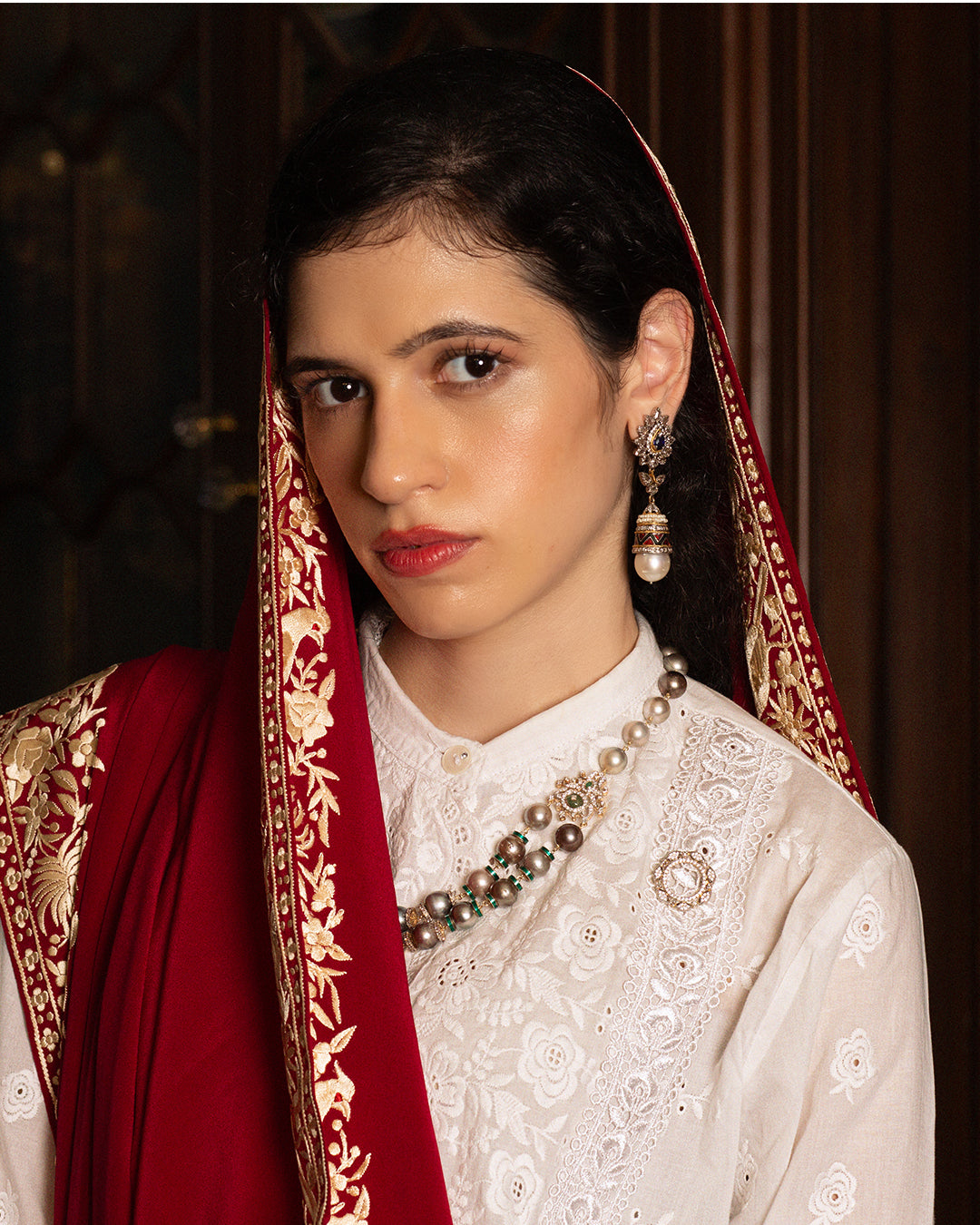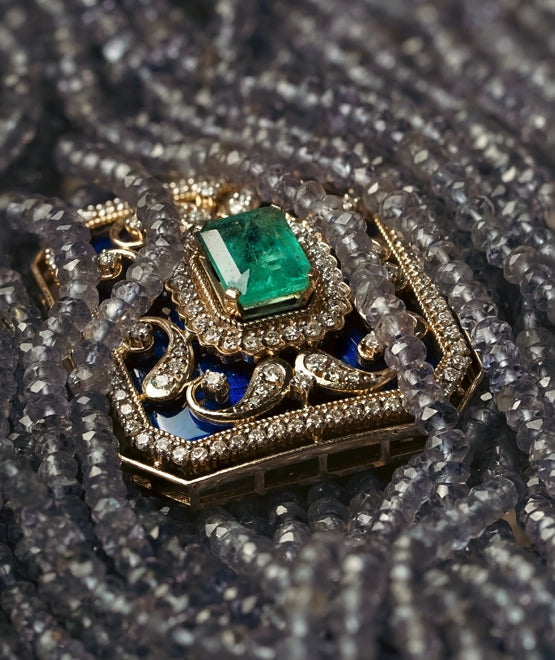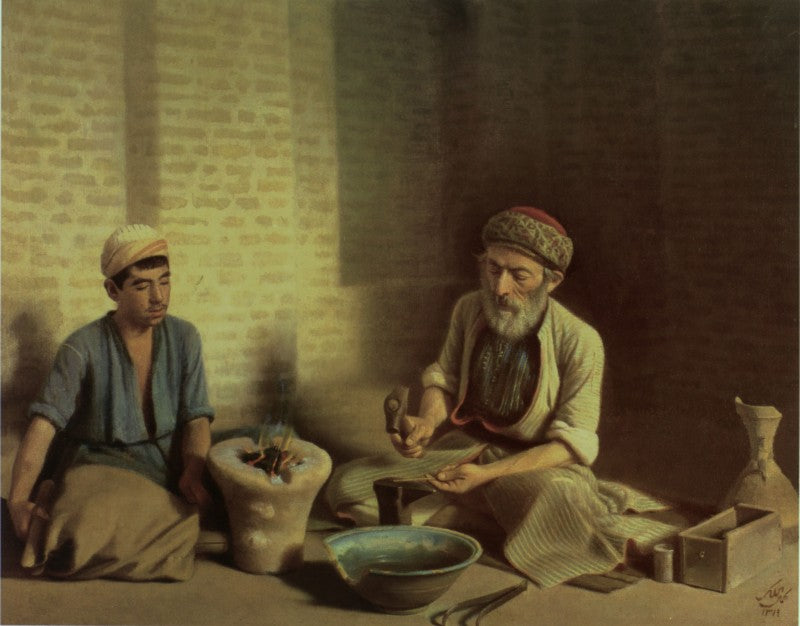In the past, the system of weights and measures for everything, including gold jewelry, varied from region to region. Its history, before the advent of the standard Metric system, can be divided into three major periods, namely the pre-Akbar period, the Akbar period, and the British colonial period.
The pre-Akbar period saw a varying system of weights and measures from place to place, product to product, and from rural to urban areas. People used weights of different seeds, wheat berry and ratti (crab's eye seed) being the most common ones to measure weight. When Akbar came to power, he recognized the need for a standardized system, and he went with the barleycorn. Though this did not work in favor of his attempt to standardize. Rather, it simply added a new system to the already scattered systems.

Red-and-black-spotted jequirity, or crab’s eye seeds. Because of its remarkably uniform weight, this seed has been used since antiquity for weighing precious metals and gemstones. It is therefore colloquially called “the weighing seed”. Source: Traditional Jewelry of India, Oppi Untracht
Image courtesy: Pinterest
Local weights and measures were gradually replaced by common standards that more or less became universal throughout India as a result of the unification of the various Indian provinces under British rule. This was done to avoid any potential deception caused by the use of false or nonstandard weights.
Following independence, in 1956, the Standards of Weights and Measures Act put in place the metric system as the weights and measures standard. However, despite its establishment, the Ratti seed, a type of seed produced by the Indian wild licorice root, jequirity bean, or crab's eye shrub, is still used by goldsmiths and other jewelers to weigh gold jewelry, other precious metals, and gemstones today, owing to its nearly uniform size and weight, making it exceptionally suitable for measurement.
The seed's widespread use by goldsmiths in India to measure gold jewelry is attested to by its numerous regional names. It is known as raktika in Sanskrit, ratti in Hindi, gunja in Marathi, and gundumani in Tamil.
Apart from ratti, there are several other measures that goldsmiths use to measure gold jewelry or precious metals and gemstones. The tola is a Vedic measurement whose name is derived from the Sanskrit word tol (तोलः root तुल्), which means “weighing” or “weight”. One tola was traditionally the weight of 100 ratti seeds, with the exact weight varying by region. The tola is primarily used to weigh precious metals and coins.

A set of tolas.
Image courtesy: Wikimedia Commons
The tola was the British Indian system's base unit of mass, as well as the standard measurement of gold and silver bullion. Although metric units have officially replaced the tola since 1956, it is still in use and is a popular denomination for gold bullion bars in Bangladesh, India, Nepal, Pakistan, and Singapore. The mashas and rattis are commonly used by goldsmiths and jewelers, as well as in the assessment of precious metals.
Below is the conversion of traditional goldsmith weights popular in Northern India for gold jewelry and other jewelry and raw materials:
1 ratti = 8 khaskhas = 1.75 grains troy = 0.122 gram
1 masha = 8 rattis = 15 grains troy = 0.976 gram
1 tanka = 4 mashas = 32 rattis = 60 grains troy = 3.904 grams
1 tola = 12 mashas = 96 rattis = 180 grains troy = 11.712 grams = 1 silver rupee
5 tolas = 1 chhatak
16 chhataks = 1 ser
40 sers = 1 maund

Silver rupee coins released by the British East India Company served as the functional standard for the tola during the time. Source: Wikipedia
Image courtesy: Wikimedia Commons
